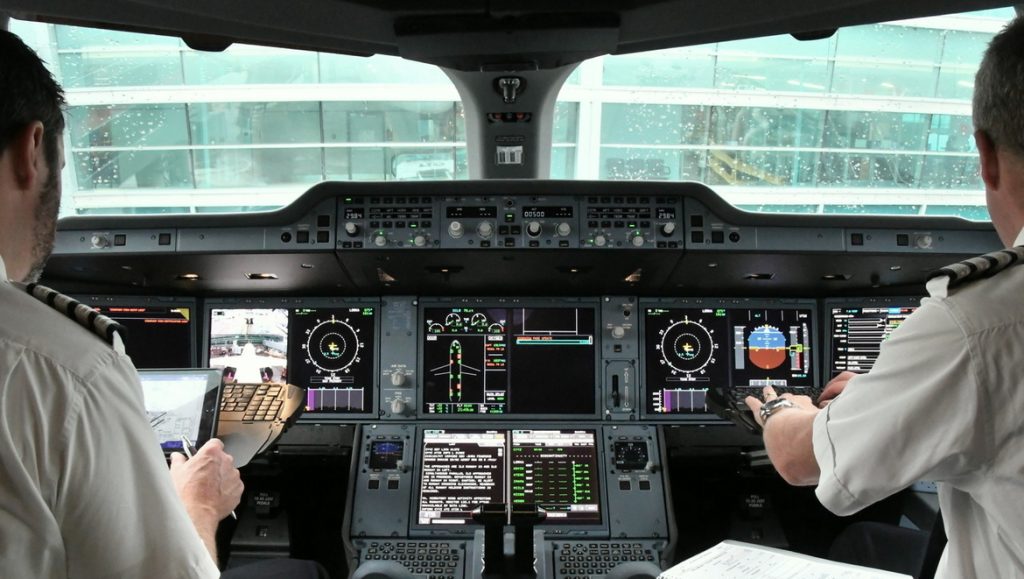
A Bloomberg report has suggested that stood-down and furloughed pilots who are not currently flying regularly could pose a threat to the industry moving forward.
On 15 September, a Lion Air flight carrying 307 passengers and 11 crew veered off the runway shortly after landing in Medan, sparking investigation by Indonesia’s transport safety regulator.
The investigation found that the pilot had flow less than three hours in total within the previous 90 days, and the first officer had not flown at all since 1 February. Luckily, no one was injured in the runway incident.
In its preliminary report on the Lion Air incident, the Indonesian safety authority laid out the pilots’ experience, the approach of the plane, weather conditions and landing.
The pilot in command was a 48-year-old Airbus A330 flight instructor with about 17,000 hours flying experience; the 46-year-old first officer, who’d been working as a captain for Thai Lion Air before relocating to Indonesia in March, had a similar amount of flying hours.
On its approach, Flight 208 requested a change of runway due to stormy weather.
At about 1,000 feet, the first officer handed control to the pilot. He then noticed that the plane was nearing the left edge of the runway and told the pilot to adjust.
The right rudder pedal was applied after touching down but the left main landing gear went off the tarmac, breaking two runway lights.
According to Bloomberg, the Lion Air incident highlights an emerging worry for the industry as it navigates out the other side of the COVID-19 pandemic.
Pilots have had limited opportunities to fly due to airlines grounding their planes and scaling back their operations, as the industry faces a prolonged slump in demand for air travel.
In its preliminary report into the Lion Air incident, Indonesia’s National Transportation Safety Committee said the pandemic has made it harder to maintain pilot proficiency and flying experience.
The aircraft involved in the incident was an Airbus A330, one of 10 in the carrier’s fleet.
Notably, Lion Air doesn’t have a simulator for the A330, and its pilots are trained at third-party facilities across Indonesia, Malaysia and Singapore.
Travel restrictions imposed in light of COVID-19 have made those training facilities harder to access, claimed the Bloomberg report.
“Regular flying keeps your mind in the cockpit,” said Mohan Ranganathan, an aviation safety consultant who was an adviser to India’s Directorate General of Civil Aviation.
“Being away from flying for such a long time brings in some complacency. Add loss of income, uncertainty about jobs or the future of the airline, that brings in additional stress. With an increase in stress levels, proficiency drops.”
Analytics company Cirium said almost a third of the world’s passenger jets remain in storage.
Meanwhile, thousands of pilots have been laid off or furloughed, and those still in work are flying a lot less due to ongoing subdued demand for air travel.
The issue of out-of-practice pilots has been raised previously, when the European Union Aviation Safety Agency cited it as a possible factor in the crash of a Pakistan International Airlines plane in Karachi in May, that killed 99 people.
“The pilots did not seem to be as fluent in the way they were conducting their flights as they should have,” European Union Aviation Safety Agency executive director Patrick Ky said in September regarding the PIA flight.
“If you haven’t flown for three months, six months, you need to be retrained in some way in order to come back.”
Further, at an event in October, Singapore’s central bank chief Ravi Menon spoke about the lingering effect COVID-19 will have on the aviation industry and pilots who haven’t flown for long periods.
“It’s not like picking up after taking two months off. When you take two years off, it’s very different,” he said.
In light of concerns, the International Air Transport Association’s vice president for Asia Pacific, Conrad Clifford, said the industry group has been looking at creating special travel bubbles so pilots can access simulators to ensure they can remain current.
“I’m glad to say that governments are doing something about this,” he said.
Additionally, the International Civil Aviation Organisation has called for flight crew to be officially recognised as key workers so they can utilise travel bubbles and access training facilities, including simulators, to maintain certifications, experience and proficiency.
Ian Cheng, senior vice president of flight operations at Scoot, said its pilots are being kept engaged with simulator sessions and meetings to update on latest developments.
“Because of the low amount of flying, it’s essential to keep proficiency levels up,” he said.
According to Ranganathan, it will take about a month of regular flying for pilots to get their confidence and skill levels back, along with lots of training.
“When you are not focused, decisions can get delayed,” he said. “Just a few seconds can make a difference between a safe flight or an accident.”










